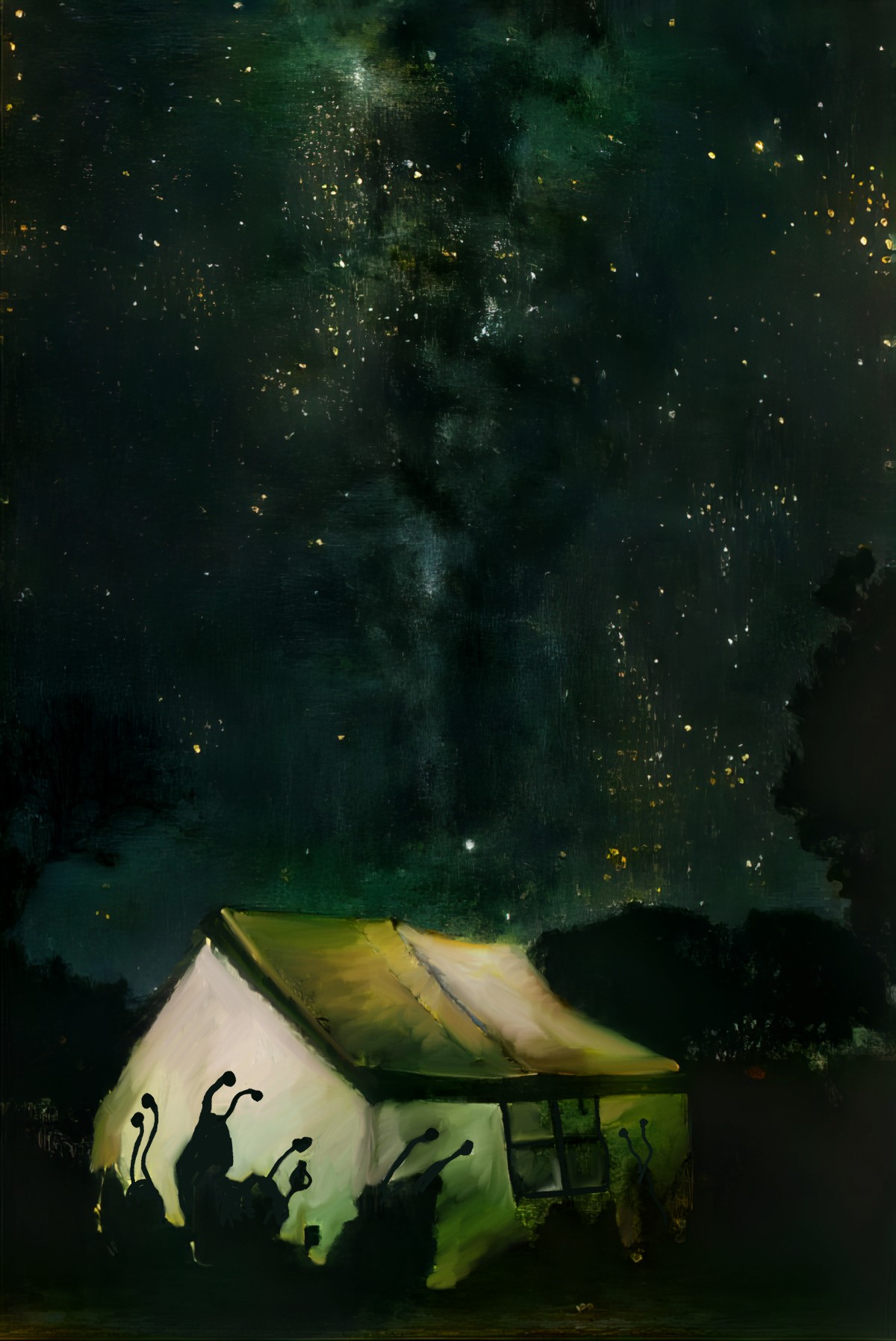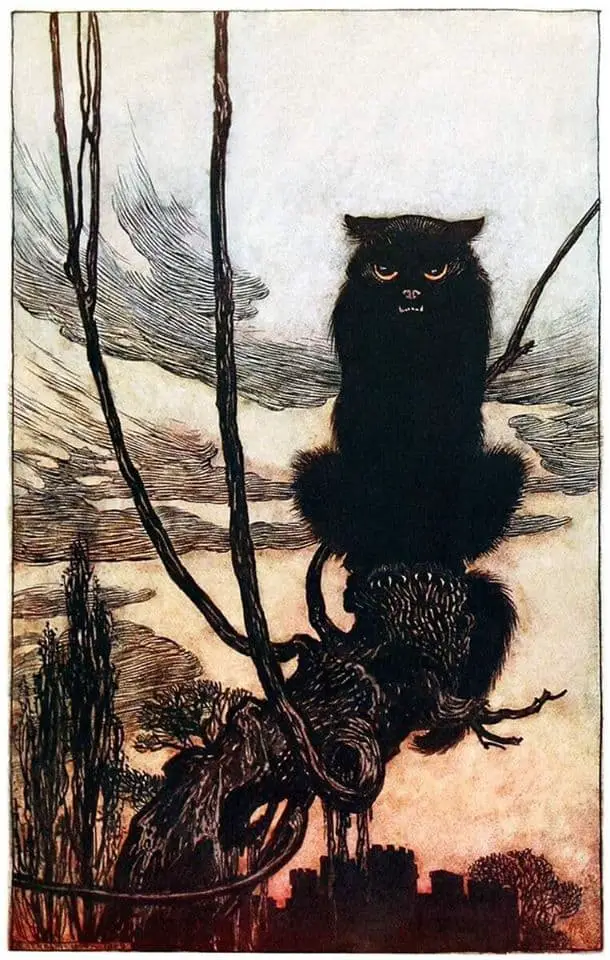Writing scary tales for children is difficult, because it has to be interesting without being too scary. How is it done? Where’s the line?
What have storytelling experts said?
I’ve always believed that children, even at a very young age, know their limits, and if a story is too frightening and overwhelms them in some way, they will either fall asleep or walk away. If you read to your child on a regular basis, it’s easy to navigate this terrain with conversations about each story that help you instinctively calibrate what is appropriate for bedtime reading. Reading fairy tales may expose children to the dark side, but it also introduces them to survival skills, teaching them to use their heads to outsmart predators. Shoving the witch into the oven may be a bridge too far, but no reason to be reverent about the words on the page, especially for the younger crowd.
Maria Tatar
People say, ‘Your book keeps giving me chills,’ but I don’t know what that feeling is. Horror always makes me laugh. Normal adult things scare me, but not things from a book or a movie.
R.L. Stine, from an interview with Village Voice
There’s no formula. I think you have to create a very close point of view. You have to be in the eyes of the narrator. Everything that happens, all the smells, all the sounds; then your reader starts to identify with that character and that’s what makes something really scary.
R.L. Stine from an interview with mediabistro.
What’s the difference between a monster movie and a dark fairy tale?
It’s a very, very, very thin difference. I think that horror stories come from fairy tales, in a way. They share a lot of similarities. I think the difference is tonal. You know, the fairy tale contains a lot more elements of magic and whimsy and the the horror story contains a lot more, sort of, almost existential feelings — sort of dread, and ultimately they are similar melodies, played at a very different key.
Guillermo del Toro
Over time, supernatural and horror fiction that has been targeted to children and young adults has become darker. If we look at books from the early 20th century through to the 1950s or 60s, we see books similar to The Wonderful Wizard of Oz in their mild handling of frightening characters and scenarios. As we move into the 1970s we start to find horror novels targeted towards young adults. Stephen King’s works Salem’s Lot and Firestarter won the American Library Association’s Best Books for Young Adults award in 1978 and 1981 respectively, showing that children and young adults have been quite willing to read scary literature for some time. Neil Gaiman’s books Coraline and The Graveyard Book are also targeted for the tween audience, and could easily be considered scarier than even these specifically labelled horror books from authors such as King and Dean Koontz. In recent years, it appears clear that more and scarier books are being targeted to the child and young adult audience, and as a result, children are reading scarier books than in the past.
Thomas Pynchon

It is debatable whether or not fear of the unknown is greater than fear of the known, but in childhood so much is unknown that a child, in order to make sense of fear, must isolate and identify it; only the known can be dealt with.
Jan Mark, British Writer
I believe that children should be allowed to feel fear … Walter de la Mare … believed that children were impoverished if they were protected from everything that might frighten them … Once one has answered this basic question … the second problem arises of how it is to be presented. This is really a technical problem which has to be faced by every writer for children.
Catherine Storr, from ‘Things That Go Bump In The Night’ in the Sunday Times Magazine, March 1971
“We’re not really being scared by movies at all, at least not in the ‘brain chemistry way’.”
FilmmakerIQ

What Does The Research Say?
The Center for Scholars and Storytellers has come up with seven factors which induce fear in children:
- The threatening appearance of a character
- A character behaving threateningly
- A character children identify with being under threat and helpless
- Stories that make children aware, for the first time, of threatening scenarios within their experience
- Stories in which safe places are deliberately breached
- Music and sound that signify danger
- Scenes depicting injury and homicide
Importantly, ‘many programs that most parents and professionals would not consider problematic, induce fear reactions as well – from Disney animated movies to even educational programs. For example, little Dumbo’s trunk reaching out to his caged mother was painful to watch for many children. Similarly, scenes from the classic Wizard of Oz that included the Witch and the monkeys elicited strong fear experiences.’
The researcher recommends content creators and parents offer thrill experiences rather than fear experiences. Unfortunately no further clarification is provided for the word ‘thriller’. I have taken a deep dive into the meaning of thriller and it’s a nebulous term, used differently by storytellers than by marketers.
Whatever is meant by that, most children can’t cope with thrillers until about 7 or 8.
When you were a kid, did you like scary stories?
What about those of you who have kids of your own? Do your kids like scary stories?
Our four-year-old daughter loves the Hayao Miyazaki movies (Studio Ghibli). I’m sure there are many, many reasons for this, but she loves those films partly for the periodic frisson of horror. Her favourite of the lot is Spirited Away, which includes a particularly scary scene in which Chihiro briefly loses sight of her parents, only to come back and find they’ve turned into pigs. This scene haunts and delights our daughter in equal measure. She asks to watch Spirited Away over and over again, and some days she only wants to watch up until the part where the parents turn into pigs (the first inciting incident, as it happens) before turning the DVD off and doing something else. For that reason, I can tell she watches it for the thrill.
She also loves Princess Mononoke. Like Spirited Away, this film has a well-deserved PG rating here in Australia, not least for the ‘monster covered in worms’, as she puts it. You can see a screenshot of that horrible thing on this blogger’s list of Top Ten Movie Monsters. Demon boars deserve their place on that list, though I’m sure Japanese stories could fill a top ten list all on their ownsome. If you’ve never delved into the monsters and demons of Japanese folklore, you’re in for a miserable and thrilling treat. (Who needs Stephen King when you’ve got Wikipedia?) Then, when I look at this seriously unsettling clip from the disturbing new children’s film Toys in the Attic (brought to us via io9), I see that the Czechs have a higher tolerance than we do for scaring the bejeebus out of their children, so maybe we in the West are particularly antsy about what we let our children watch.
I sometimes wonder, though, whether our four-year-old should be watching these films. She enjoys them, all right. She is mesmerised by them in a way ABC for Kids can’t quite achieve. That said, she also likes eating McDonalds, and I wouldn’t give her unlimited access to that. I’m reluctant to limit her viewing to the bright and cheerful though, for a few reasons.
1. These stories all come good in the end.
At the end of Spirited Away, the parents turn back into people, and Chihiro leaves the spirit world safe and sound, ready to embark on her new life. At the moment when the parents turn back into humans, our daughter rushes in to tell me this, with a big smile on her face. In children’s literature there are rules which don’t necessarily apply to adult literature, and the happy ending is one such rule. (Actually, I’m going to stick to the phrase ‘reassuring ending’. ‘Happy’ can sound trite and cliched.)
2. Children imagine terrible things endogenously.
They don’t need outside media input: children seem universally terrified by the idea of parental abandonment for example, and no one taught babies to cry out of loneliness at night. If anything, stories with reassuring endings might have a healing function rather than a terrorising one. Also, how good are we, really, at predicting what our children are going to find scary? It’s impossible to reimagine any children’s show as horror, even The Magic School Bus.
3. Once we get to a certain age, we know when we’re being (over)protected from the harsh realities of life.
Drawing on my own childhood experience, I was sent to bed to read every night after dinner, so I never viewed TV that was meant for an adult audience. I don’t begrudge this — I was allowed to read in bed until much later, and this did wonders for my imaginative life. But it also meant that the few times I caught a glimpse of adult TV, those scenes became memorable for their rarity.
One Saturday night I must have been up later than usual and I caught the beginning of a horror film before being sent up to bed. The film was probably a terrible 1980s B-grade thing, and I have no idea what it might have been called; I only remember the horrific scene of a child being locked inside a wooden chest in his grandmother’s attic, then etching a cry for help into the wood with his fingernails. That must’ve been the scene that alerted my mother to the inappropriate content, and I was sent to bed at that point, protestations ignored.
Had I watched the movie to its conclusion, it’s likely I’d have been disappointed, because no film lives up to a child’s imaginative world. Instead, I concocted my own events, and even managed to terrorise my younger cousin with that made-up story, because we shared a bedroom over the Christmas holidays and that scene formed the basis of my ghost stories. My cousin still remembers those stories. (I remember those evenings for a different kind of disappointment: Lisa had always fallen asleep before I got to the really scary part.)
So this point is related to my second point: the imaginings of children out-colour much of the media content out there, and certainly out-colours the scariest of the scary stories produced with a child audience in mind. All children are different in this regard, and parents are the best judge of their own children’s scariness thresholds. But there’s a fine line between ‘protective’ and ‘over-protective’. Some commentators argue that some parents are going too far in an attempt to shield their children from anything less than peachy:
‘If it’s true that childhood is a kind of walled garden, then it shouldn’t surprise us that children try to poke through the wall at every chance they get’, writes Kathleen McDonnell in her book Honey, We Lost The Kids: Rethinking Childhood in the multimedia age. ‘If there are secrets, kids will try to uncover them, simply because it’s their nature to want to know. In fact, it’s precisely because this knowledge is kept secret that it becomes so highly charged for kids. The forbidden fruit is invariably the most appealing.’
- The Most Unintentionally Terrifying Movies Of All Time, from io9
- 22 Incredibly Creepy Toys, from Buzzfeed. I don’t care what it is, if it’s got those shutting and opening eyes with stiff black lashes on it, it’s creepy. (Those Jolly Chimps come a close second, and I drew one in The Artifacts. Did you see it?)
- This limbless amphibian family discovered in India is pretty scary. But then I don’t like diaphanous life forms in general.
- Someone’s list of scariest movies, on IMDB. I haven’t seen all of the films on this list, but the ones I have seen are super spooky!
- The Earth Might Have A “Pulse” Which Causes Extinctions Every 60 Million Years, from io9
- The World’s Largest Rodent on Wikipedia I wouldn’t want to feel this massive thing swimming between my ankles in any dogdamn South American waterhole. It’s a lot less cute when you know it’s a rodent though, no? Otherwise it might pass for a catdog.
- The Spooky TV Movie That Caused Post Traumatic Stress Disorder, from io9 (the website of many spooky things).
- A list of the 8 Scariest Places On Earth. The closest to me is Victoria’s Beechworth Lunatic Asylum. I intend to pay a visit someday, since I somehow forgot to visit when I actually lived in Victoria.
- I think all ice-cream vans play scary music, but this one on YouTube is pretty darn scary indeed.
- The Most Disturbing Books Of All Time from Pop Crunch
- 5 Scary Reads from To Be Read Blog
- Watch a GIF of The Joker applying lipstick
- An incredibly simple horror short to make you afraid of the dark, shared by io9
- This ‘Goodnight Moon’ Remake Will Ruin Your Favorite Children’s Book from Mashable
- The Bloodlines series from Wired breaks down what exactly it is that makes a movie scary.
- Scaryish Stories (for Halloween) from Imagination Soup
- Terrifying macro pictures of polychaetes or bristle worms from The Telegraph
- Top 10 Scariest Monsters in Children’s Books according to Smashing Lists
- Monsters Inked from Teach With Picture Books, in which teachers are provided with some great classroom ideas.
- Terrifying French Children’s Books from The Guardian
- 10 Terrifying Children’s Books from around the world, collected by Oh No They Didn’t
- 9 Unintentionally Terrifying Children’s Books from Flavorwire
- 8 Disney Movie Scenes I Refuse To Show My Daughter from Mommyish
- Fairytales too scary for modern children, say parents, from The Telegraph

